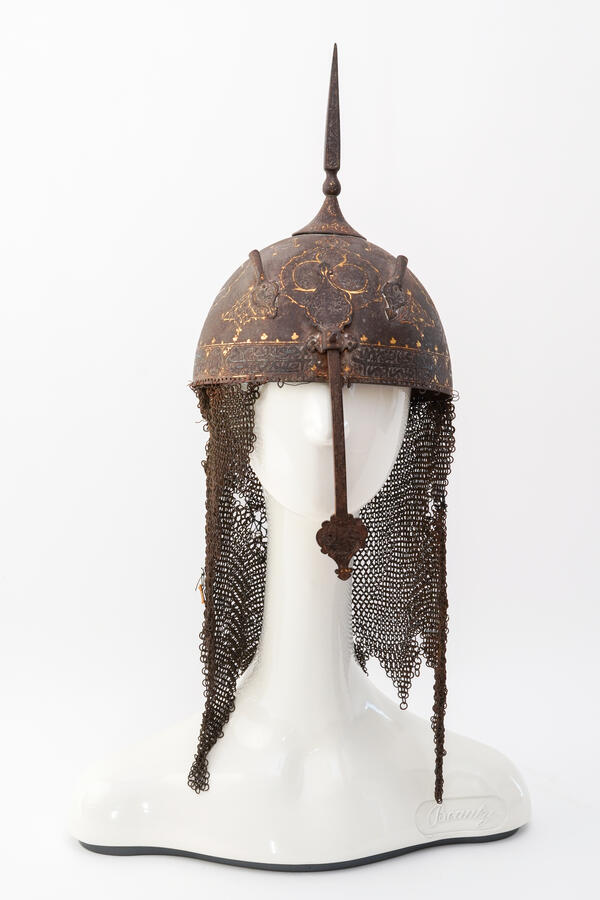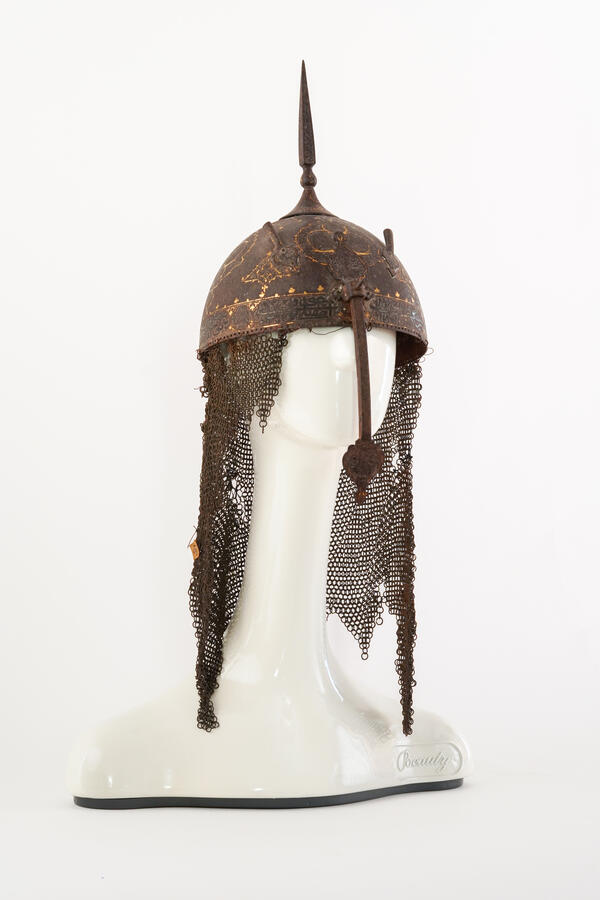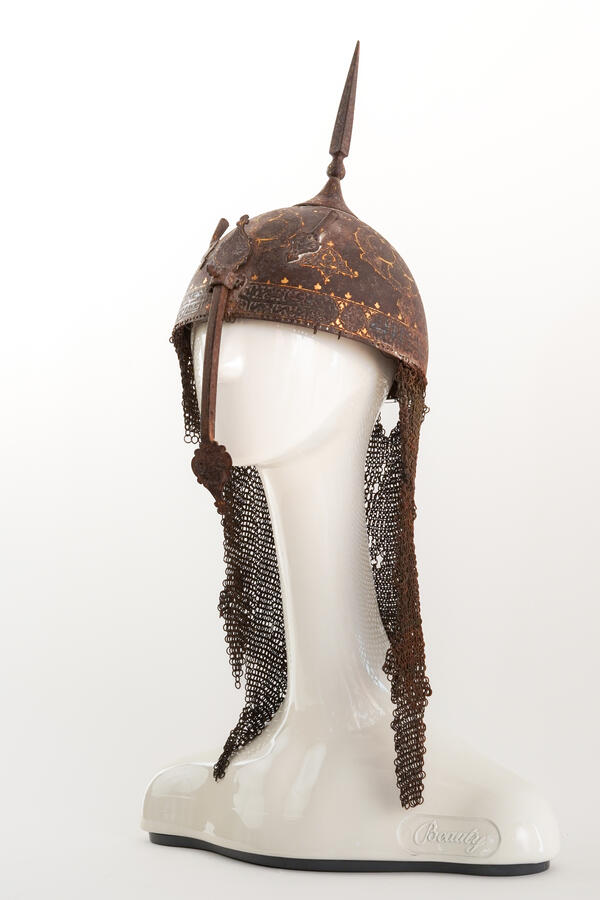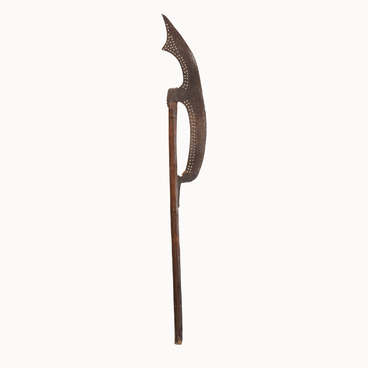The Kulah Khud helmet originated in late medieval Iran. The helmet represents the final stage in the development of traditional combat and ceremonial headwear of West Asian warriors. The earliest image of the headdress, which can be seen as the closest prototype of the classical Kulah Khud, appeared in the 1524 miniature manuscript “Shahnameh”. From the 17th century, headgear of this type began to spread rapidly among the armor-clad warriors of West, Central and South Asia. The peak of popularity of Kulah Khuds fell on the second half of the 18th and the early 19th centuries. Their design was so successful and the decoration so spectacular that the helmets were reproduced by armorers of West, Central and South Asia almost unchanged up to the second half of the 19th century.
The most important condition for the long life of the helmet is its compatibility with the weaponry and combat tactics of the peoples of the region. The slashing-cutting saber strikes glided over the smooth muzzle of the Kula-Khud without causing any harm to the helmet or the warrior. An “arrow” noseguard and a chainmail aventail protected the warrior’s face from both direct and diagonal blows. The forehead piece allowed the craftsman to reduce the height of the dome, which greatly reduced the overall weight of the helmet. Long chainmail, fastened under the chin, protected the warrior’s neck from lateral cutting blows and non-armor-piercing arrows. At the same time, elastic ringed armor did not obstruct the soldier’s sight, did not restrict him during the battle and allowed him to freely tilt and turn his head in any direction. The second reason behind the popularity of the Kulah Khud is the vast creative potential for weapon-smiths. Iranian craftsmen have created more than two dozen variants of decorative design for this helmet. It was the combination of delicate silhouette with rich, dense ornamentation and a lush plume of feathers that made the Kulah Khud helmets memorably vivid and quickly won the affection of the Iranian aristocracy.
The armorers of West Asia in the 16th — the first third of the 19th century were the military trendsetters for their counterparts in Central and South Asia, so the spread of Kulah-Khuds was quite rapid, both as a direct copy and in the form of numerous imitations.
The most important condition for the long life of the helmet is its compatibility with the weaponry and combat tactics of the peoples of the region. The slashing-cutting saber strikes glided over the smooth muzzle of the Kula-Khud without causing any harm to the helmet or the warrior. An “arrow” noseguard and a chainmail aventail protected the warrior’s face from both direct and diagonal blows. The forehead piece allowed the craftsman to reduce the height of the dome, which greatly reduced the overall weight of the helmet. Long chainmail, fastened under the chin, protected the warrior’s neck from lateral cutting blows and non-armor-piercing arrows. At the same time, elastic ringed armor did not obstruct the soldier’s sight, did not restrict him during the battle and allowed him to freely tilt and turn his head in any direction. The second reason behind the popularity of the Kulah Khud is the vast creative potential for weapon-smiths. Iranian craftsmen have created more than two dozen variants of decorative design for this helmet. It was the combination of delicate silhouette with rich, dense ornamentation and a lush plume of feathers that made the Kulah Khud helmets memorably vivid and quickly won the affection of the Iranian aristocracy.
The armorers of West Asia in the 16th — the first third of the 19th century were the military trendsetters for their counterparts in Central and South Asia, so the spread of Kulah-Khuds was quite rapid, both as a direct copy and in the form of numerous imitations.






